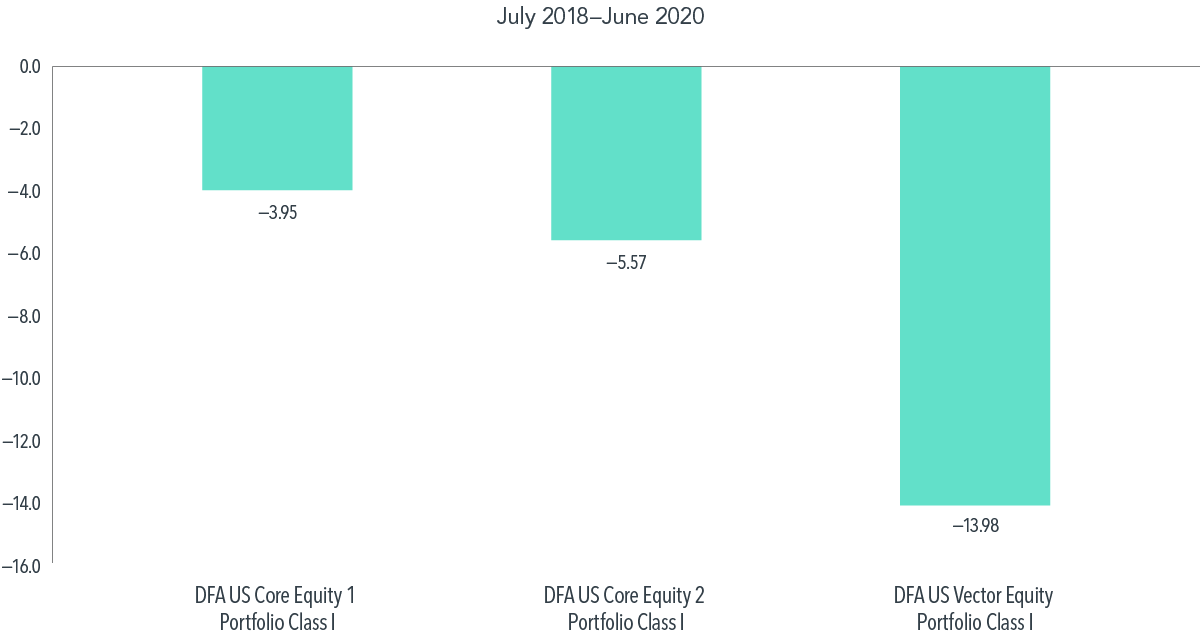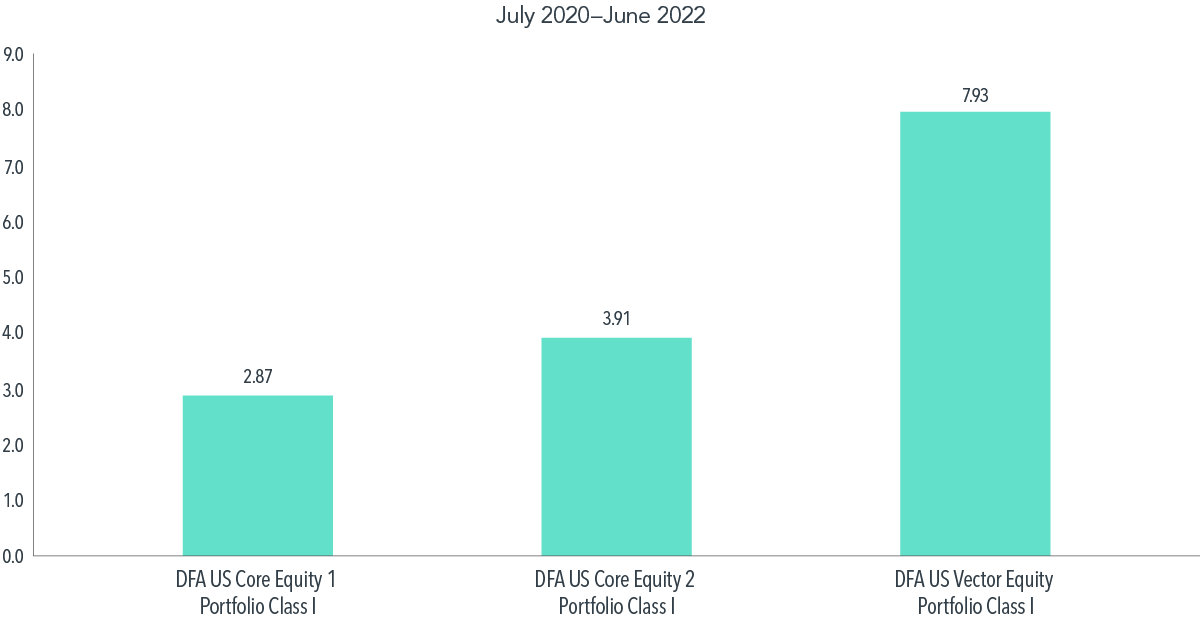Value’s recent turnaround has rewarded investors who remained disciplined following its prolonged slump. In addition to reminding us how quickly premiums can show up, the past few years reinforce an important factor in determining how much one should tilt toward higher expected returns: The upside is beneficial only if you can stay invested through the down times.
The Pendulum Swings
The three-year period ending in June 2020 was one of the worst ever for the US value premium, with the Russell 1000 Value Index underperforming the Russell 1000 Growth Index by 17.2 percentage points annualized. Since then, value has been mounting a comeback, beating growth by 8.1 percentage points annualized through June 2022.
Investors’ experience during these times depended, in part, on their degree of value emphasis. The more one deviates from the market along drivers of expected returns, the greater the tracking error relative to the market—but the greater the expected outperformance when targeted premiums are positive.
Three of Dimensional’s US marketwide strategies convey the range of outcomes for various levels of tilt (see Exhibit 1). During the value swoon from 2018 through 2020, the relatively lower-tilted US Core Equity 1 Portfolio underperformed the Russell 3000 Index by 3.95 percentage points per year. At the other end of the spectrum, US Vector Equity trailed the index by 13.98 percentage points.
The script has since flipped.1 Value’s rebound helped push Core 1 to a nearly three-percentage-point advantage over the market in the two-year period ending in June 2022. On the other hand, Vector’s heavier tilt led to outperformance of nearly eight percentage points per year.
Switch Back
Annualized return difference (in percentage points) vs. Russell 3000 Index


Performance data shown represents past performance and is no guarantee of future results. Current performance may be higher or lower than the performance shown. The investment return and principal value of an investment will fluctuate so that an investor’s shares, when redeemed, may be worth more or less than their original cost. To obtain performance data current to the most recent month-end, visit us.dimensional.com. Short-term performance results should be considered in connection with longer-term performance results.
It’s important for investors to balance their enthusiasm for higher expected returns with their tolerance for underperformance. Reining in one’s tilts toward the premiums following a period of underperformance—and consequently forfeiting a portion of the eventual rebound—could lead to an unfortunate scenario. Land on a tradeoff you can stick with and you may find April showers are followed by May flowers.
By


 Christine joined the NAM team in 2020, along with her six-plus years of Administrative and Executive Assistant experience. She was born and raised in Wisconsin. She has a love for film, comedy writing, and music, particularly between the 50’s and 80’s.
Christine joined the NAM team in 2020, along with her six-plus years of Administrative and Executive Assistant experience. She was born and raised in Wisconsin. She has a love for film, comedy writing, and music, particularly between the 50’s and 80’s. During my salad days, I studied business at the University of Minnesota and the Carlson School of Management. Taking this route seemed to make sense when I graduated high school, as it offered the opportunity to pursue a career in business. However, the experience didn’t go as planned. I found myself disillusioned by the focus and teachings of business school, with many of the lessons revolving around detached relationships focused solely on profit. I eventually concluded that this was not my personal path. I chose instead to purse a passion – writing – and veered off into journalism for the next six years of my life.
During my salad days, I studied business at the University of Minnesota and the Carlson School of Management. Taking this route seemed to make sense when I graduated high school, as it offered the opportunity to pursue a career in business. However, the experience didn’t go as planned. I found myself disillusioned by the focus and teachings of business school, with many of the lessons revolving around detached relationships focused solely on profit. I eventually concluded that this was not my personal path. I chose instead to purse a passion – writing – and veered off into journalism for the next six years of my life.